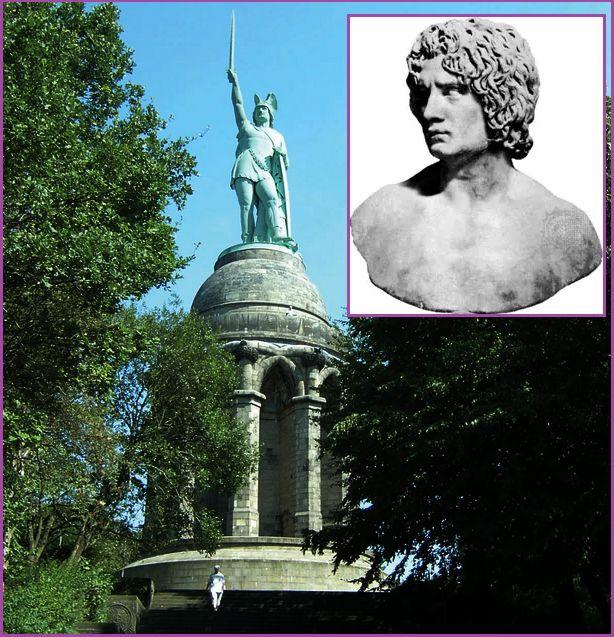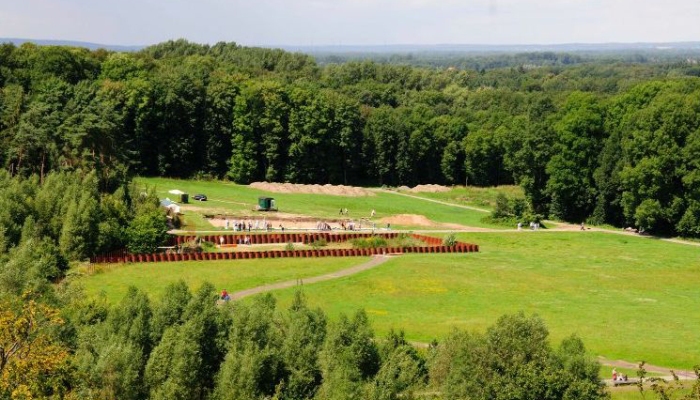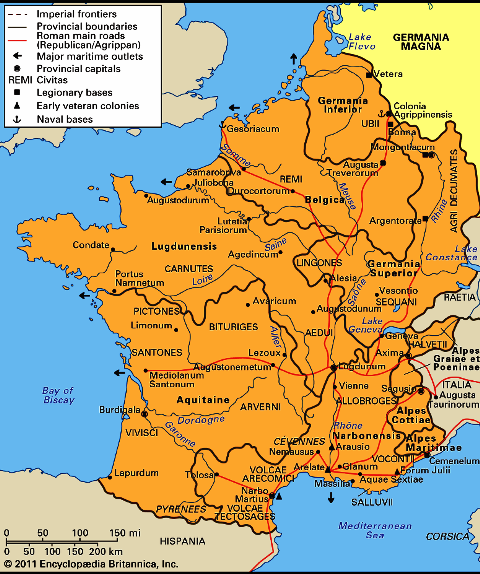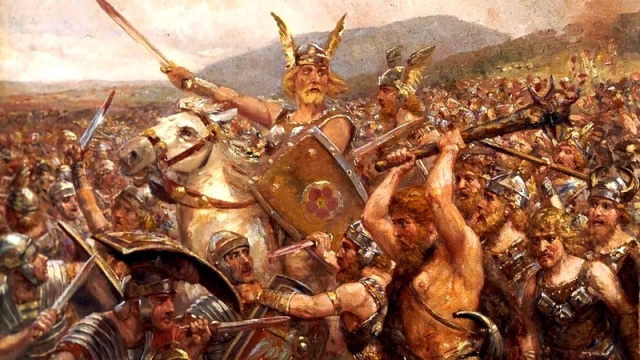Drusus & Germanicus Avenge the Roman Defeat at Teutoburg Forest.

Site of the Teutoburg Forest.
Mike Anderson.
After the tragic defeat in the Teutoburg Forest in 9 CE Augustus sent Tiberius to the Rhine to calm and secure the border, at that time no major operations were planned against the rebellious Germanic tribes. However the Romans did not want to let the fallen soldiers be left without a proper burial, and resolved to recover the Legionary Eagles - Aquila - that remained in the hands of the Germans.

Roman Aquila.
Julius Caesar’s conquest of Gaul in the mid-1st century bce divided the largely Celtic tribes into distinctly Romanized provinces and free Germanic chiefdoms, with the Rhine River as a natural boundary, while in the winter of 17/16 bce, Legio V Alaudae lost its Aquila - Eagle - standard to the Sicambri tribe. Every legion carried an Aquila as an embodiment of Roman spirit losing it was the ultimate disgrace. With an Aquila now in the hands of the Sicambri, Emperor Augustus Caesar realized the necessity of bringing the region of Germania to heel. He spent the next four years increasing Rome’s military presence on the frontier and sent his adoptive son Drusus to pacify the area in his stead. Drusus created two armies for the lower and middle Rhine, regions which the Romans called Germania Inferior and Germania Superior, respectively.

Drusus.
Wiki.
In 12 bce Drusus took the army of Germania Superior on an expedition to crush the Sicambri, Frisii, and Chauci tribes to the north. He was able to force the tribes to surrender before year’s end, and some sources suggest that he retrieved the lost aquila. Drusus then aimed his legions at the densely forested territory farther east of the Rhine. He built a large fort in the Lippe valley and wintered there before pacifying the region. Over the following years he advanced as far as the Elbe River in the east of modern Germany, before he died in 9 bce, Drusus had subjugated a vast swath of territory and tribes that the Romans collectively called Germania. Britannica.

Germanicus.
To this end at the end of 14 CE Germanicus the adopted son of Tiberius, set out on a campaign which was described almost a century later by Tacitus in “Annales," who makes it clear that the purpose of the Germanicus expedition was not the expansion of Rome, but the revenge of the Roman Empire for its defeat. Germanicus inflicted numerous defeats on Arminius, but what is extremely interesting is the view that Roman soldiers were supposed to see in the place where Varus’ legions fought.
Tacitus emphasizes how hideous a sight for the legionaries was, the numerous swamps and dense forests as well as the remains of Arminius’ traps and blockades. Germanicus’ troops reached the first Varus camp which indicated that it was formed by three legions, but units were already decimated. In the middle of the plain near the camp, numerous bones of fleeing or defending soldiers and horses were found, as well as their preserved weapons.

Death of a Legionary.
Collector,com.
There were skulls and limbs of people and animals nailed to the trees, remnants of sacrificed officers tribunes & centurions were still visible in the nearby woods. As Tacitus reports Germanicus’ troops were accompanied by surviving witnesses of the massacre from 9 CE, who showed him the place where Varus in the second Roman camp was killed from his own hand..
Where gallows for the Romans were prepared, and where Arminius spoke to his victorious troops .. then the Roman legionaries of Germanicus began to bury the surviving remains of his comrades in arms .. after two years of fighting in Germania in 17 CE, Germanicus had his triumph in Rome for his victories; in the procession he led among others the wife of Arminius – Thusnelda and their son.
Despite the victories and defeat of Arminius, Tiberius decided not to annex Germania the Great (Germania Magna), judging that the benefits of conquering it were disproportionate to the costs and conditions in which the Romans would live with numerous swamps and forests, the border of the Empire in this region finally leapt against the wide waters of the Rhine.

The Hermannsdenkmal Commemorating Arminius' Victory in Teutoburg Forest.
Wiki.
Germanicus’ expedition was primarily intended to soothe wounds and trauma that were still fresh among the Romans, whereas despite his defeat Arminius still held a high position among the Germanic tribes. Ultimately however his great power disturbed the tribal aristocracy so much that in 21 CE he was murdered.
ImperiumRomanum.

Teutoburg Forest Battle Site.
Mike Anderson.

Roman Cuirass Recovered at the Kalkriese Site.
World Archaeology.
Editorial: Many historians have cast doubt on the claim the Teutoburg Forest Site as identified by British Major
John Clunn in 1987 is the true location of the battle, citing the paucity of relics recovered at the site limited to one single piece of Roman armor, which could have been from a legionary in Germanicus' or Drusus' camp, who had lost his life in a skirmish following their campaigns in Germany.
We are told the Romans were trapped on a "narrow piece of land" between an impenetrable swamp on one side and a dense forest with thousands of enemy in situ on the other .. it is not a sound tactic to allow yr army to be thusly trapped .. so how it all came about and where the battle actually took place for me remains a mystery. Varus is said to have spurned advice Arminius had troops in place and was preparing an ambush.
Now we must recall the tactic employed by
Hannibal when he crushed the Romans .. his ostensibly friendly irregulars had accompanied the Romans on their march until they had the entire column shadowed, who then attacked right along their line at a given signal .. which is more or less the same thing Arminius did, he had left the Roman column supposedly to see how his supposedly friendly "irregulars" were getting on, then organized the ambush .. as educated Romans the Legion Tribunes and Varus should have kept Hannibal's method in mind.










